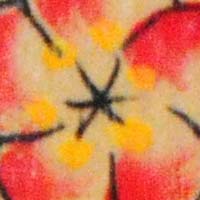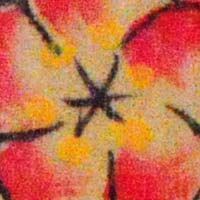Nikon D700 Review
Review Date: September 3rd 2008
Author: Gavin Stoker
Leave a comment about this Review
|
Image Quality
All of the sample images in this Review were taken using the 12 megapixel Fine JPEG setting, which gives an average image size of around 5Mb.
With the AF Nikkor 50mm F/1.4D test lens attached, the Nikon D700 picks up every skin pore, and, in tandem with its default Picture Control setting of Standard, delivers pleasingly realistic colours, with Vivid adding noticeably more punch and depth. White balance is on the whole accurate. With the Nikkor 24-120mm f/3.5-5.6G (IF) zoom lens attached, there is some barrel distortion and corner shading visible at maximum wide angle, particularly noticeable when examing the bricks on our white wall test shots, but a longer telephoto reach is more of a boon for candids – the D700 possessing a reasonably loud (and so possibly distracting) shutter sound.
Metering and exposure is as reliably accurate as you'd expect, with only the occasional blown highlight and no pixel fringing to groan about. For us the JPEG images more closely resemble the look and feel of shots from the D300 rather than the film-like quality provided by the D3. Undoubtedly though, and as we found with the D300 and D3, image noise is impressively well handled, with here even ISO 3200 comparable to the results at ISO 800 from mid range DSLRs, and detail sufficiently retained at ISO 6400 to make the setting usable. OK, at ISO 25600 on our daylight test shots the image is beginning to resemble a dodgy TV signal, but again the results are no worse than most digital compacts manage at ISO 1600. It's arguably very rare you'd want to use such a setting, but, as with its predecessors, on the Nikon D700 it feels rather more than a gimmick and affords an unprecedented opportunity for shooting without flash and still getting usable results.
Noise
There are 9 ISO settings available on the Nikon D700 which you can select at any time if the camera is in any shooting mode. Image noise is impressively well handled, with here even ISO 3200 comparable to the results at ISO 800 from mid range DSLRs, and detail sufficiently retained at ISO 6400 to make the setting usable. OK, at ISO 25600 on our daylight test shots the image is beginning to resemble a dodgy TV signal, but again the results are no worse than most digital compacts manage at ISO 1600. Here are some 100% crops which show the noise levels for each ISO setting:
LO 1EV (ISO 100) (100% Crop) |
ISO 200 (100% Crop) |
 |
 |
ISO 400 (100% Crop) |
ISO 800 (100% Crop) |
 |
 |
ISO 1600 (100% Crop) |
ISO 3200 (100% Crop) |
 |
 |
ISO 6400 (100% Crop) |
HI 1EV (ISO 12800) (100% Crop) |
 |
 |
HI 2EV (ISO 25600) (100% Crop) |
|
 |
|
Sharpening
Here are two 100% crops which have been Saved as Web - Quality 50 in Photoshop. The right-hand image has had some sharpening applied in Photoshop. The out-of-the camera images at the Standard setting are slightly soft and benefit from some further sharpening in a program like Adobe Photoshop. Alternatively you can change the in-camera sharpenening level if you don't like the default results.
Original
(100% Crop) |
Sharpened (100% Crop) |
 |
 |
 |
 |
Chromatic Aberrations
We couldn't find any traces of unwanted chromatic aberrations in any of our test shots, taken with either the AF Nikkor 50mm F/1.4D or Nikkor 24-120mm f/3.5-5.6G (IF) lenses.
Flash
The flash settings on the Nikon D700 are Front-curtain Sync (normal), Red-eye Reduction, Red-eye Reduction with Slow Sync, Slow Sync and Rear-curtain Sync. These shots of a white coloured wall were taken at a distance of 1.5m.
Flash Off - Wide Angle (24mm) |
Auto Flash - Wide Angle (24mm) |
 |
 |
Flash Off - Telephoto (120mm) |
Auto Flash - Telephoto (120mm) |
 |
 |
And here are some portraits. As you can see, neither the Front-curtain Sync or the Red-Eye Reduction options caused any red-eye.
Flash On |
Flash On (100% Crop) |
 |
 |
Flash - Red-Eye Reduction |
Flash - Red-Eye Reduction (100% Crop) |
 |
 |
Night Shot
The Nikon D700's maximum shutter speed is 30 seconds and there's also a Bulb option for longer exposures, which is great news if you're seriously interested in night photography. The shot below was taken using a shutter speed of 1/10th second, aperture of f/1.6 at ISO 200. I've included a 100% crop of the image to show what the quality is like.
Night Shot |
Night Shot (100% Crop) |
 |
 |
|
![]() PhotographyBLOG
is a member of the DIWA
organisation. Our test results for the Nikon D700 have been submitted to DIWA
for comparison with test results for different samples of
the same camera model supplied by other DIWA
member sites.
PhotographyBLOG
is a member of the DIWA
organisation. Our test results for the Nikon D700 have been submitted to DIWA
for comparison with test results for different samples of
the same camera model supplied by other DIWA
member sites.
